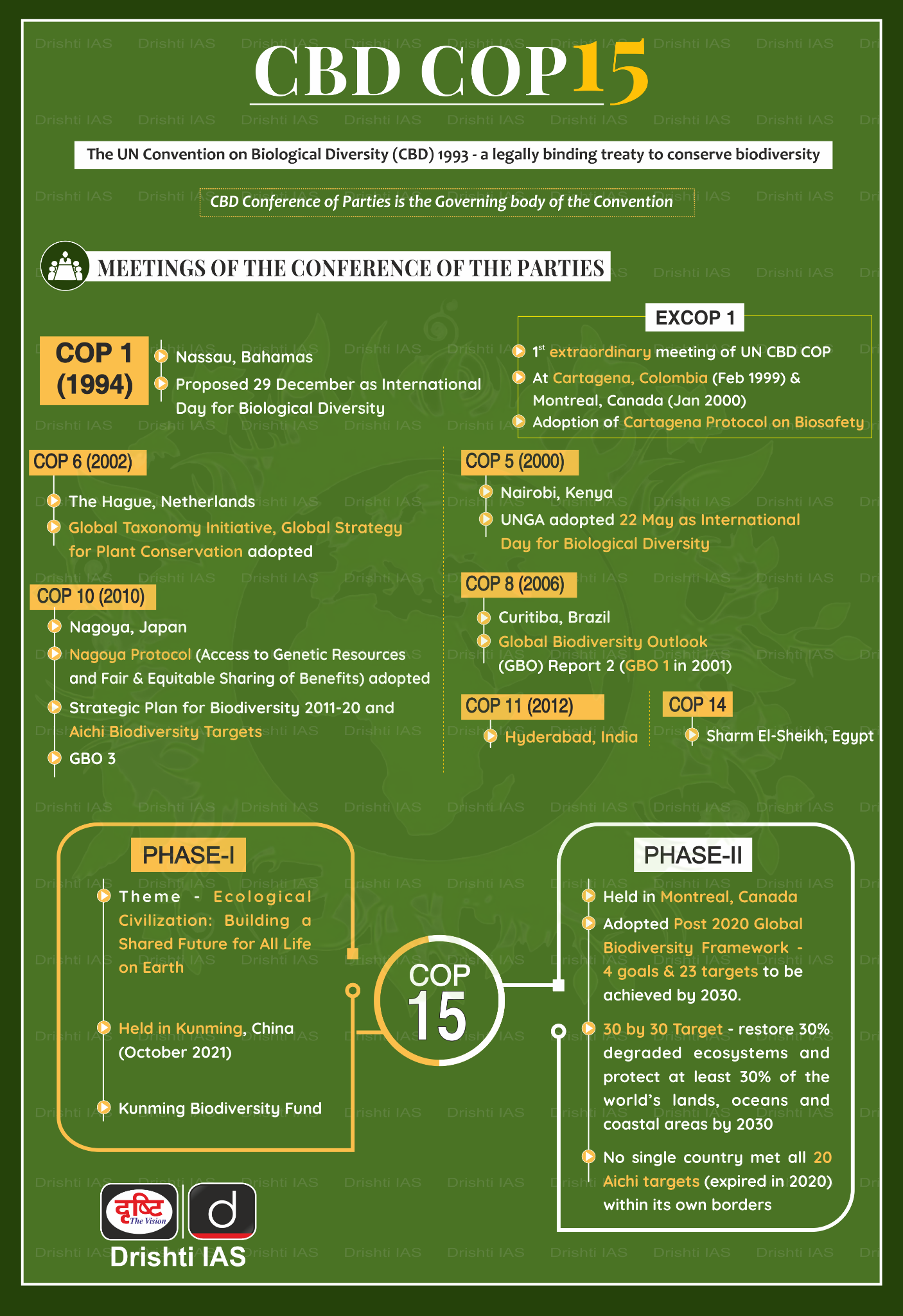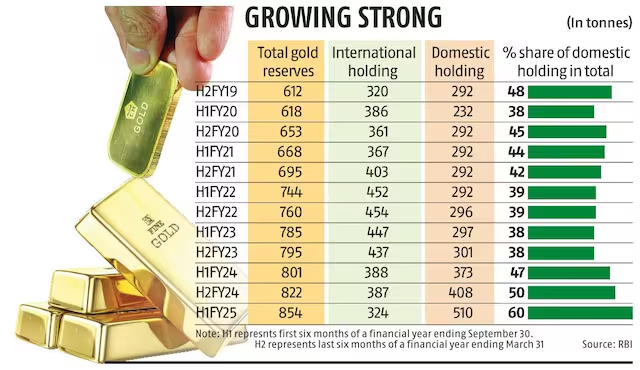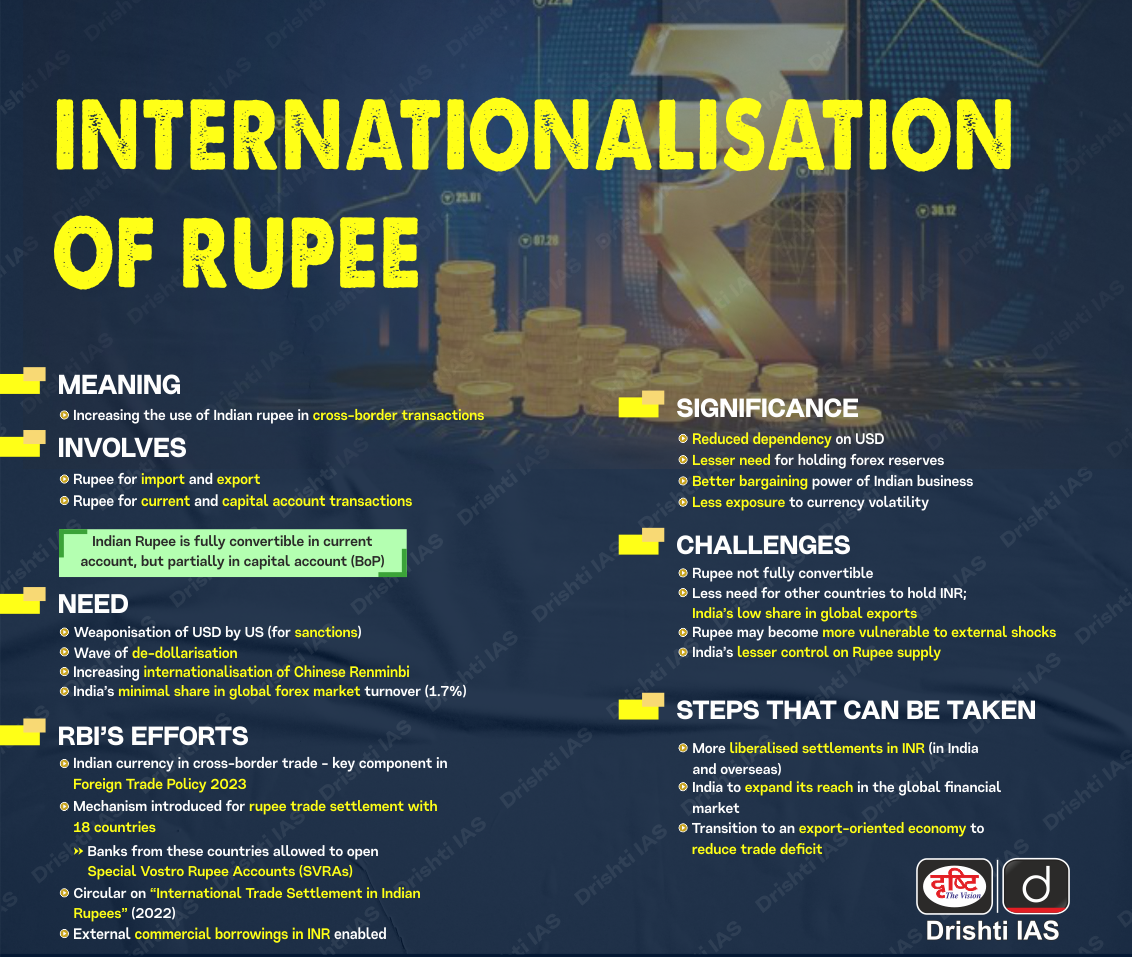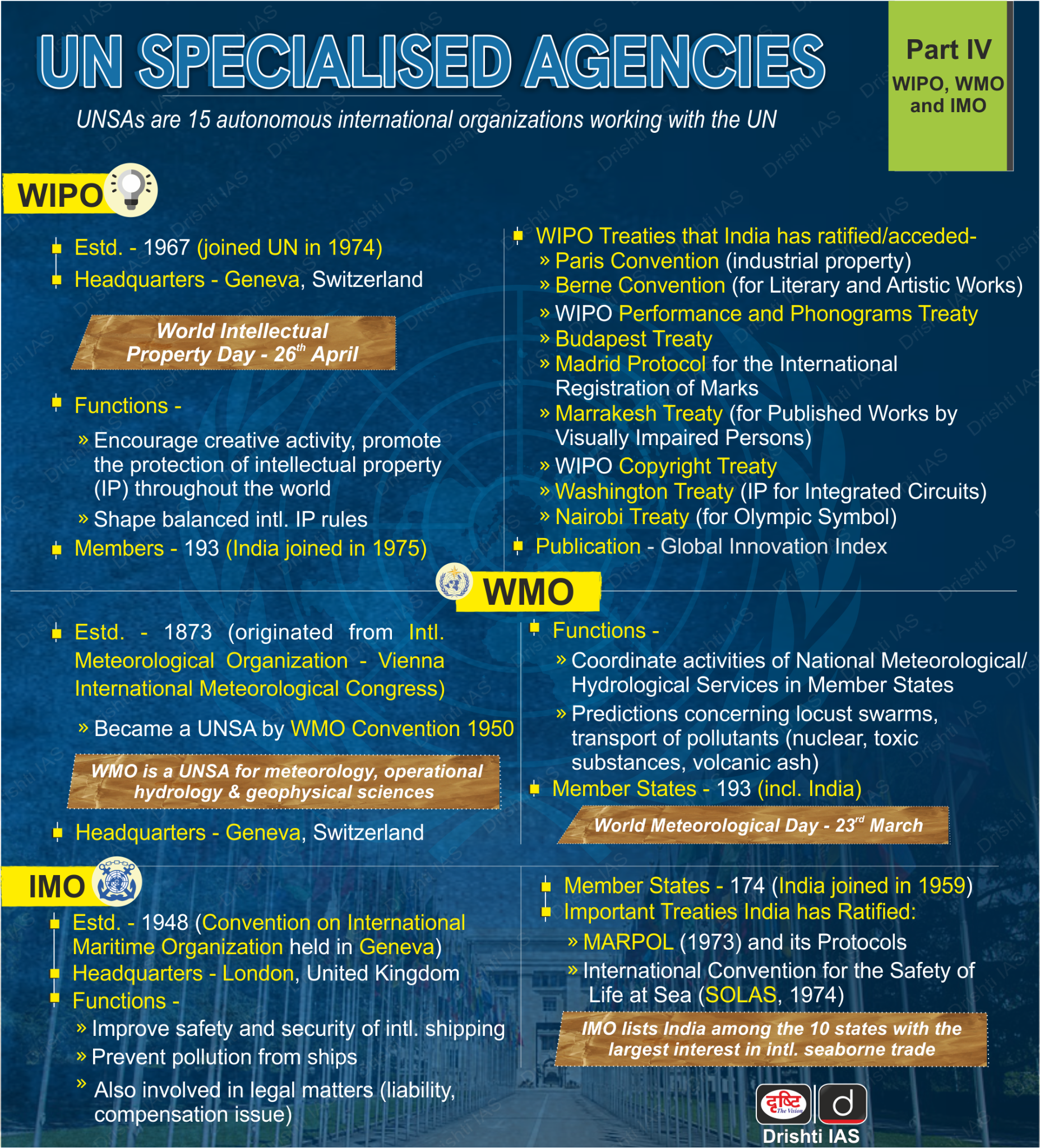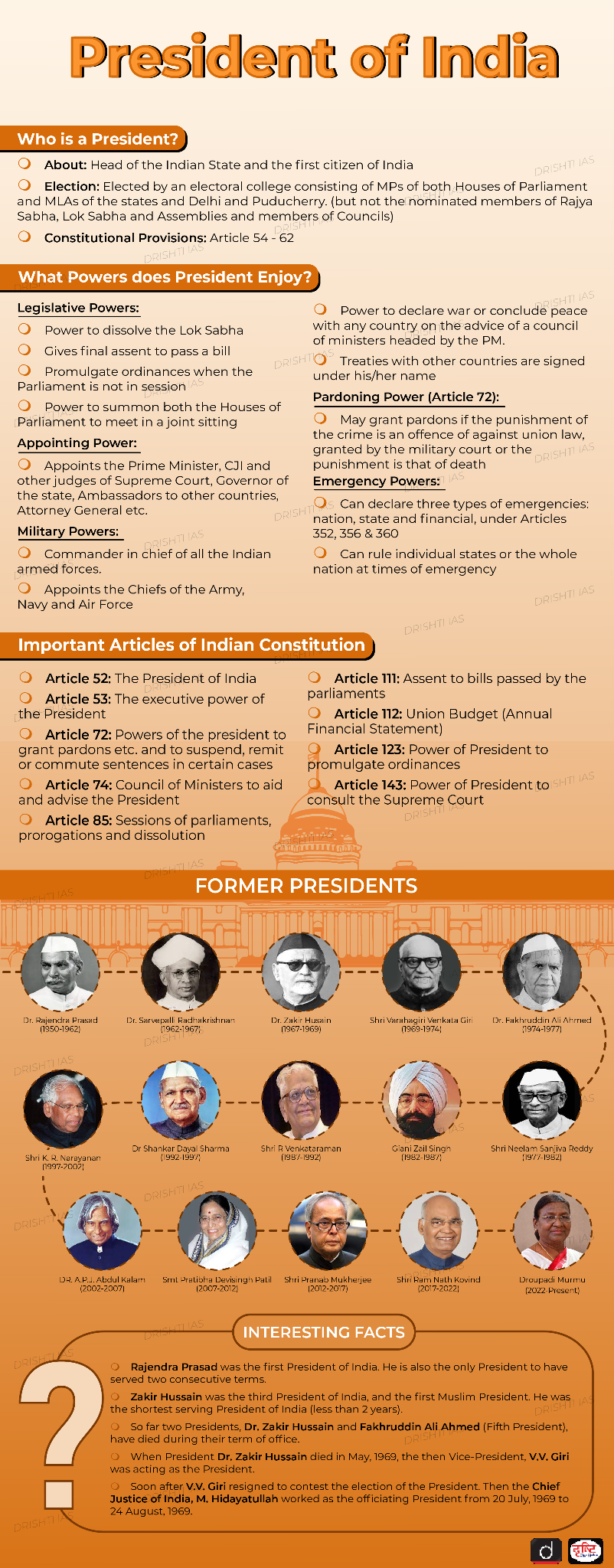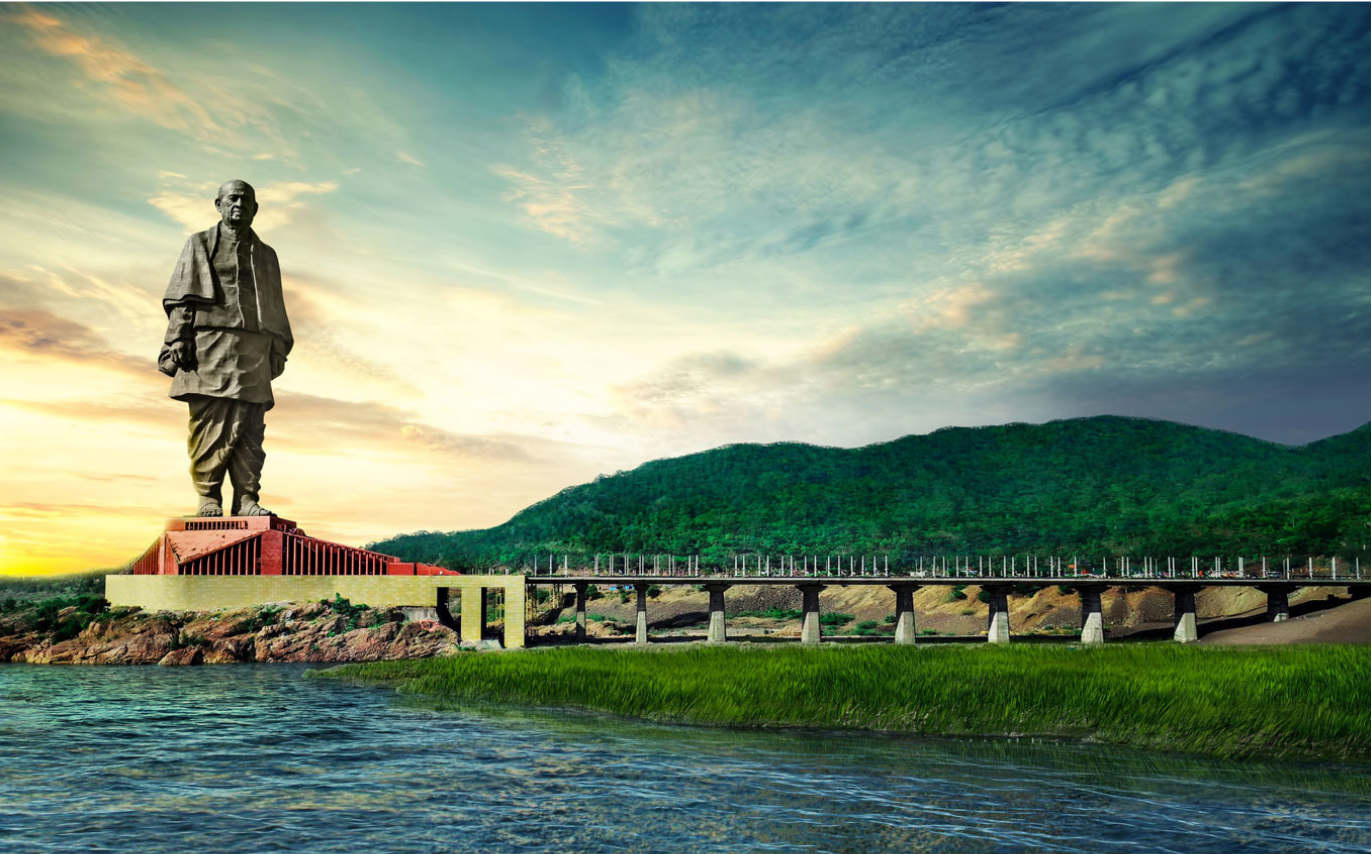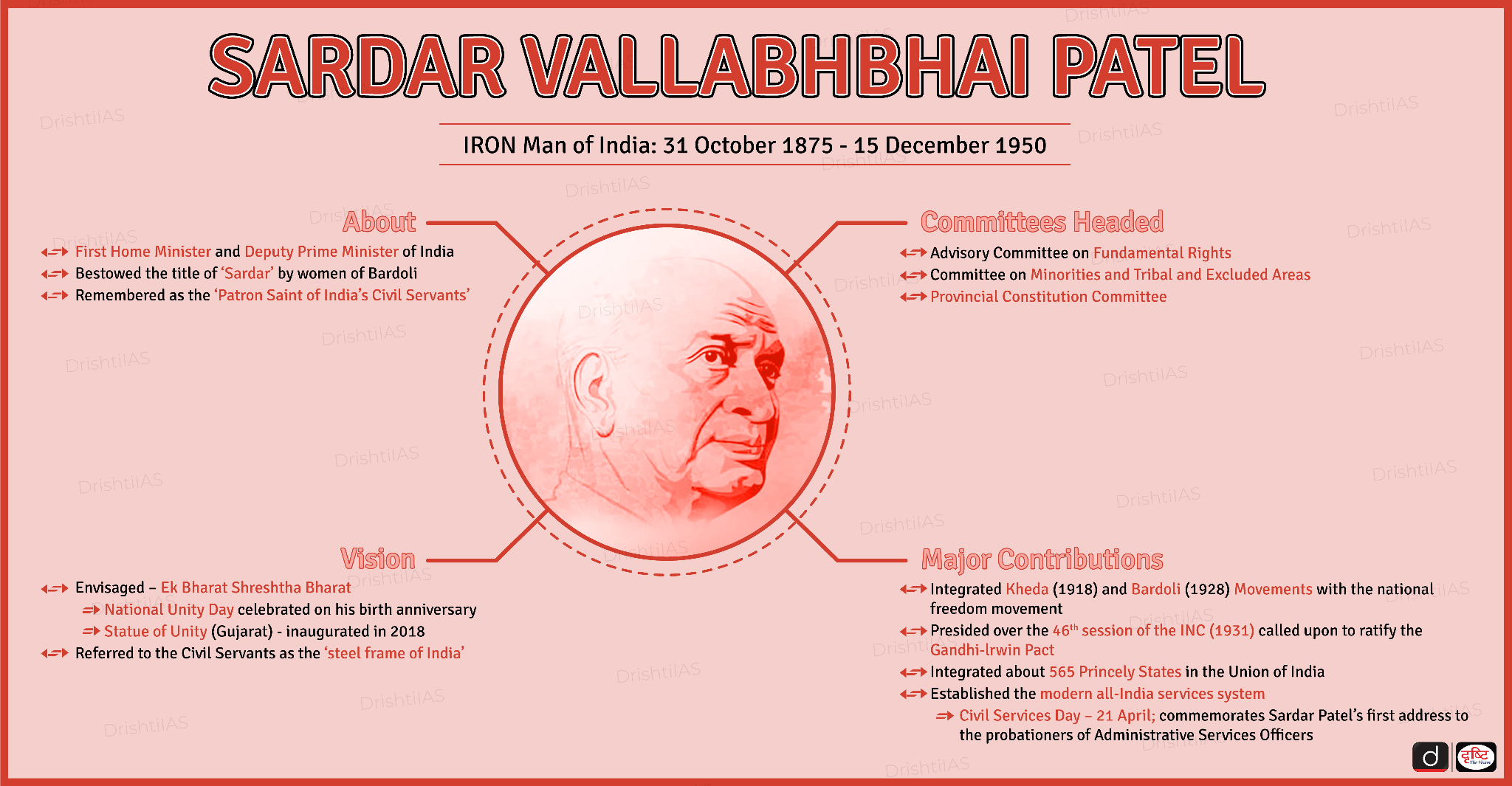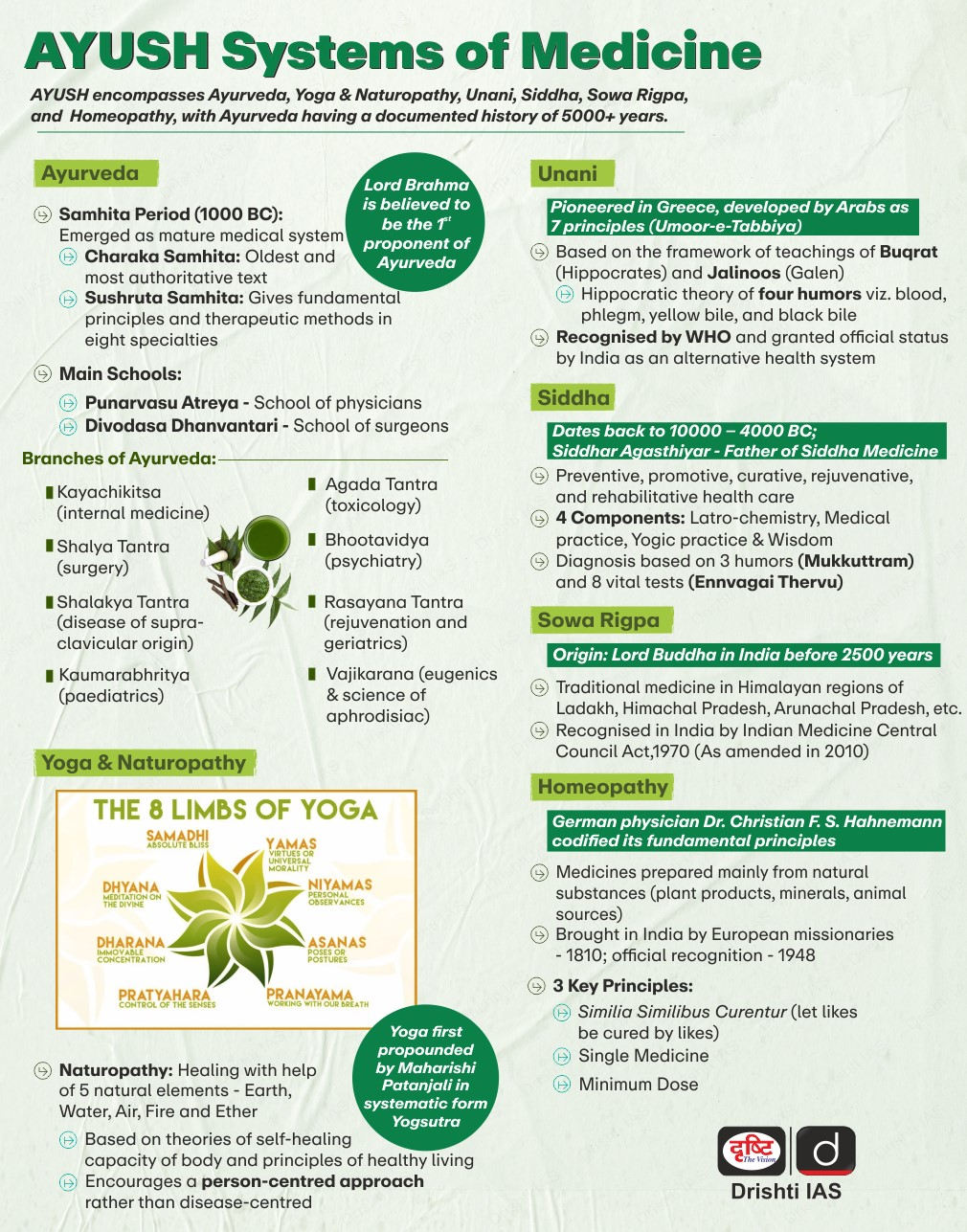Biodiversity & Environment
COP-16 of Convention of Biological Diversity
For Prelims: Convention of Biological Diversity (CBD), National Biodiversity Strategy and Action Plan (NBSAP), Kunming-Montreal Global Biodiversity Framework (KMGBF), Digital Sequence Information (DSI), Genomic Sequence, Kunming Biodiversity Fund (KBF), Synthetic Biology, DNA Sequencing, Genome Editing, Ecologically or Biologically Significant Marine Areas (EBSAs), Cartagena Protocol on Biosafety, One Health, Living Modified Organisms (LMOs), National Biodiversity Authority (NBA), Biodiversity Management Committees.
For Mains: Significance of the Kunming-Montreal Global Biodiversity Framework, India’s biodiversity targets.
Why in News?
Recently, the 16th edition of the Conference of Parties (COP 16) to the Convention of Biological Diversity (CBD) concluded in Cali, Colombia.
- India launched the updated National Biodiversity Strategy and Action Plan (NBSAP) at COP 16 to the CBD aligning with the Kunming-Montreal Global Biodiversity Framework (KMGBF).
What are the Key Highlights of the COP-16 to the CBD?
- Operationalization of the Cali Fund: Cali Fund was established to ensure fair and equitable sharing of benefits from the use of digital sequence information (DSI) on genetic resources.
- At least 50% of the Cali Fund will focus on the self-identified needs of Indigenous Peoples and local communities, particularly women and youth.
- DSI refers to genomic sequence data that plays a fundamental role in environmental and biological research.
- At least 50% of the Cali Fund will focus on the self-identified needs of Indigenous Peoples and local communities, particularly women and youth.
- Permanent Subsidiary Body: Parties agreed to establish a new permanent subsidiary body on article 8j that deals with preservation and maintenance of the knowledge, innovations and practices of indigenous peoples.
- They also adopted a new Programme of Work on indigenous peoples and local communities.
- It outlines specific tasks to ensure that indigenous peoples and local communities meaningfully contribute to the conservation, sustainable use, and fair sharing of biological diversity.
- They also adopted a new Programme of Work on indigenous peoples and local communities.
- Resource Mobilisation: Parties agreed to develop a new “Strategy for Resource Mobilization” to help secure USD 200 billion annually by 2030 to support biodiversity initiatives worldwide.
- Kunming Biodiversity Fund (KBF) was launched at COP 16 with a USD 200 million contribution from China.
- Another goal is to redirect USD 500 billion per year in subsidies that harm biodiversity by 2030.
- National Biodiversity Targets: 119 countries out of CBD’s 196 Parties, submitted national biodiversity targets to help reach the 23 KMGBF targets.
- To date 44 countries have submitted National Biodiversity Strategy and Action Plans to support the implementation of national targets.
- Synthetic Biology: COP-16 introduced a new thematic action plan to help address the inequities through capacity-building, technology transfer and knowledge-sharing among developing countries.
- Synthetic biology uses engineering principles to create new organisms or modify existing ones through DNA sequencing and genome editing.
- Invasive Alien Species: It proposes guidelines for managing invasive alien species through new databases, improved cross-border trade regulations, and enhanced coordination with e-commerce platforms.
- Ecologically or Biologically Significant Marine Areas (EBSAs): COP 16 agreed on a new and evolved process to identify EBSAs.
- Established in 2010, EBSAs identify the most critical and vulnerable areas of the ocean and have since become a focal point in ocean conservation efforts.
- Sustainable Wildlife Management and Plant Conservation: A decision on sustainable wildlife management emphasised the need for monitoring, capacity-building, and inclusive participation of indigenous peoples, local communities, and women.
- Progress in plant protection should be measurable and consistent with global biodiversity targets.
- Global Action Plan on Biodiversity and Health: At COP 16, CBD Parties approved a Global Action Plan on Biodiversity and Health designed to help curb the emergence of zoonotic diseases, prevent non-communicable diseases, and promote sustainable ecosystems.
- The strategy embraces a holistic “One Health” approach that recognizes the health of ecosystems, animals, and humans as interconnected.
- Risk Assessment: In Cali, Parties to the Cartagena Protocol on Biosafety welcomed new, voluntary guidance on assessing the risks posed by living modified organisms (LMOs) containing engineered genes.
- Recognition of People of African Descent: A further decision was taken to recognize the role of people of African descent in implementing the Convention.
Kunming-Montreal Global Biodiversity Framework (KMGBF)
- About: It is a multilateral treaty aimed at halting and reversing biodiversity loss globally by 2030.
- Adopted in December 2022 during the 15th Conference of the Parties (CoP), it supports the Sustainable Development Goals (SDGs) and builds on achievements and lessons from the 2011–2020 Strategic Plan for Biodiversity.
- Purpose and Goals: It aims to ensure that by 2030, at least 30% of degraded terrestrial, inland water, marine, and coastal ecosystems are effectively restored.
- It includes 23 action-oriented global targets for urgent action by 2030.
- This target refers to collective global efforts, not a mandate for each country to allocate 30% of its land and water areas.
- Long-Term Vision: The framework envisions a collective commitment to living in harmony with nature by 2050, providing a foundational guide for current actions and policies related to biodiversity conservation and sustainable use.
Note:
- Historical Context: India’s first National Biodiversity Strategy and Action Plan (NBSAP) was created in 1999, with updates in 2008 and 2014 to align with the Aichi Biodiversity Targets.
- Need of NBSAP: India is a megadiverse country, home to over 55,000 plant taxa and 100,000 animal species conservation of which is vital for both livelihoods and ecological health.
What are the Key Points of India's Updated NBSAP?
- Updated NBSAP: The updated NBSAP outlines 23 National Biodiversity Targets aligned with the KMGBF’s global objectives.
- Targets focus on reducing biodiversity threats, promoting sustainable use, ecosystem resilience, species recovery, and sustainable management.
- Comprehensive Structure: The updated NBSAP includes seven chapters addressing contextual analysis, capacity-building, financing mechanisms, and biodiversity monitoring frameworks.
- Implementation: The Ministry of Environment, Forest, and Climate Change (MoEFCC) oversees biodiversity conservation, supported by a multi-tier governance structure.
- Key entities include the National Biodiversity Authority (NBA), State Biodiversity Boards (SBBs), Union Territory Biodiversity Councils (UTBCs), and Biodiversity Management Committees (BMCs).
- Targets:
- Conservation Areas: Aiming for 30% of areas to be effectively conserved to enhance biodiversity.
- Invasive Species Management: Targeting a 50% reduction in the introduction and establishment of invasive alien species.
- Sustainable Consumption: Enabling sustainable consumption choices and reducing food waste by half.
- Pollution Reduction: Committing to reduce pollution, halving nutrient loss and pesticide risk.
- Benefit Sharing: Promoting fair and equitable sharing of benefits from genetic resources, digital sequence information, and associated traditional knowledge.
- Financing: India expects to spend around Rs 81,664 crore from 2025-30 (FY) on biodiversity and conservation.
- Indian officials at the conference said international finance would be necessary to meet these goals.
- Community Engagement: Local communities, particularly in forest-dependent areas, will be actively involved in conservation efforts.
Conclusion
The 16th Conference of Parties (COP 16) to the Convention on Biological Diversity marked significant advancements in global biodiversity efforts, notably through the establishment of the Cali Fund, updated National Biodiversity Strategy and Action Plans, and a commitment to the Kunming-Montreal Global Biodiversity Framework, emphasising equitable resource sharing and sustainable practices.
|
Drishti Mains Question: Evaluate the key features of India’s updated National Biodiversity Strategy and Action Plan (NBSAP) and its alignment with the Kunming-Montreal Global Biodiversity Framework (KMGBF). |
UPSC Civil Services Examination Previous Year Question (PYQ)
Prelims
Q. Consider the following statements : (2023)
- In India, the Biodiversity Management Committees are key to the realisation of the objectives of the Nagoya Protocol.
- The Biodiversity Management Committees have important functions in determining access benefit sharing, including the power to levy collection fees on the access of biological resources within its jurisdiction.
Which of the statements given above is/are correct?
(a) 1 only
(b) 2 only
(c) Both 1 and 2
(d) Neither 1 nor 2
Answer: (c)
Q. With reference to ‘Global Environment Facility’, which of the following statements is/are correct? (2014)
(a) It serves as financial mechanism for ‘Convention on Biological Diversity’ and ‘United Nations Framework Convention on Climate Change’
(b) It undertakes scientific research on environmental issues at global level
(c) It is an agency under OECD to facilitate the transfer of technology and funds to underdeveloped countries with specific aim to protect their environment
(d) Both (a) and (b)
Ans: (a)
Q.“Momentum for Change: Climate Neutral Now” is an initiative launched by (2018)
(a) The Intergovernmental Panel on Climate Change
(b) The UNEP Secretariat
(c) The UNFCCC Secretariat
(d) The World Meteorological Organisation
Ans: (c)
Mains
Q. How is the Government of India protecting traditional knowledge of medicine from patenting by pharmaceutical companies? (2019)

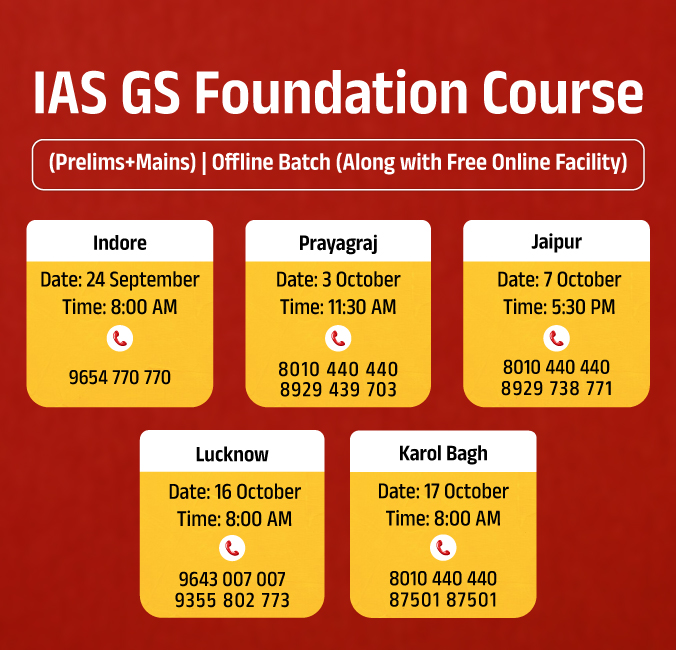
Indian Economy
RBI’s Repatriation of Gold
For Prelims: Reserve Bank of India, Bank for International Settlements, Foreign Exchange Reserves, Sovereign Gold Bonds, Import Cover, External Debt, World Gold Council, Treasury Bills, Government Securities, Foreign Currency Assets, Gold reserves, Special Drawing Rights, Reserve Tranche position.
For Mains: Role gold and foreign exchange reserves in an economy.
Why in News?
Recently, the Reserve Bank of India (RBI) has repatriated 102 tonnes of gold from the Bank of England (BoE) and the Bank for International Settlements (BIS).
- According to the RBI’s “Half Yearly Report on Management of Foreign Exchange Reserves” gold held domestically stands at 510.46 metric tonnes in September 2024.
- India’s total gold reserves held by the RBI amount to 854.73 metric tonnes.
Note:
- According to the World Gold Council (June 2024), India ranks 8th in terms of sovereign gold holdings while the US tops the list.
- India’s gold holdings amount to 840.76 metric tonnes comprising 9.57% of its forex reserves.
- Other countries ahead of India in terms of gold holdings are Germany, Italy, France, Russia, China, and Japan.
Why is India Repatriating Gold?
- Reducing Geopolitical Risks: Countries prefer holding their gold reserves domestically to protect it from potential foreign sanctions or restrictions that could freeze or restrict access to assets held abroad.
- E.g., Due to sanctions by the US and allies amid the Ukraine war, Russia’s access to USD 300 billion in gold and foreign exchange reserves has been frozen.
- Increasing Market Confidence: Gold is seen as a “safe haven” asset, especially in emerging markets, and having it within national borders can boost public confidence in the financial system.
- Economic Sovereignty: India’s gold reserves now exceeds 101% of the India's external debt which enhances India’s debt repaying capacity.
- Supporting Domestic Financial Markets: With gold physically present in India, the RBI has more flexibility to support gold-backed financial products in domestic markets.
- India’s government has promoted initiatives like Sovereign Gold Bonds (SGBs) to reduce dependence on physical gold imports.
- Global Trend of Gold Repatriation: There has been a broader trend of central banks moving gold back to their home countries, especially over the past decade.
- E.g., Venezuela brought gold back from US and European vaults in 2011 and Austria in 2015.
- Cost Savings: RBI typically pays insurance, transportation fees, custodial fees and vault charges to institutions such as the Bank of England or the Federal Reserve for holding their gold.
- By repatriating some of this gold, the RBI can reduce these recurring costs.
- Increasing Import cover: Import cover is a crucial trade indicator, reflecting reserves adequacy, which strengthened alongside the increase in foreign-exchange reserves.
- Current foreign reserves are sufficient to cover 11.8 months of import.
India’s Foreign Exchange Reserves
- Foreign exchange reserves are assets held on reserve by a central bank in foreign currencies, which can include bonds, treasury bills and other government securities.
- India’s Forex Reserve includes Foreign Currency Assets, Gold reserves, Special Drawing Rights and Reserve Tranche position with the International Monetary Fund (IMF).
- India’s foreign exchange reserves position in October, 2024 was estimated at USD 688.27 billion.
- It includes:
- Foreign Currency Assets (FCA) of USD 598.24 billion
- Gold worth of USD 67.44 billion
- Special Drawing Rights (SDRs) of USD 18.27 billion
- Reserve Tranche Position (RTP) of USD 4.32 billion.
- It includes:
Background of Foreign Exchange Rate Management
- Gold Standard (1870-1914): Currencies were directly tied to the value of gold. Each country held gold reserves to back their currency. Stable exchange rates made international trade easier and predictable.
- Bretton Woods System (1944-1971): It was established after World War II and its key features were:
- Fixed exchange rates with the US dollar as the reserve currency.
- Other currencies were pegged to the dollar at a fixed rate.
- The US dollar was, in turn, convertible to gold at a fixed price of USD 35 per ounce.
- Current Scenario (Multiple Regimes - Post-1971): Market forces of supply and demand determine exchange rates with a variety of regimes.
- Floating Exchange Rate: A currency's value is determined by supply and demand in the foreign exchange market. Exchange rates fluctuate continuously and are not officially pegged or fixed to any other currency or commodity.
- Pegged Rates: A country ties its currency to a single strong currency (e.g., USD) or a basket of currencies.
- Dollarization: Some countries completely abandon their own currency and adopt the US dollar (e.g., Ecuador).
Why the RBI Stores Gold Reserves Abroad?
- Mitigating Geopolitical Risks: By holding gold in multiple international locations, the RBI minimises the risk of having its reserves concentrated within India.
- Storing reserves in key global financial hubs like London and NewYork ensures that assets are accessible and secure in the event of any domestic or regional disruptions.
- International Liquidity: Gold held in financial centres like London, New York, and Zurich offers the RBI immediate access to global markets.
- These cities are primary hubs for gold trading, making it easy to convert gold into cash quickly if needed.
- Economic Resilience: The availability of gold reserves in international markets allows India to use them as collateral for loans or other financial instruments, supporting economic resilience and bolstering India's ability to meet international financial obligations.
- Trusted Custodians: Bank of England is considered a trusted custodian known for safeguarding national assets.
- Bank for International Settlements (BIS) offers an established international framework for central banks to manage and store their gold reserves.
What are Security Measures in Major International Gold Vaults?
- Bank of England, UK: It offers advanced surveillance systems, reinforced vault doors, and stringent access controls.
- BIS, Switzerland: The vaults feature state-of-the-art security measures, including reinforced structures, biometric access controls, and continuous monitoring.
- Federal Reserve Bank of New York, USA: Located 80 feet below street level, the vault is encased in a 90-tonne steel cylinder that makes it exceptionally secure and resistant to potential security breaches.
Conclusion
India's decision to repatriate gold reflects a shift towards enhanced economic resilience and risk mitigation. By holding more gold domestically, India reduces geopolitical and custodial risks, increases market confidence, and supports financial products, while also aligning with a global trend of central banks strengthening national control over gold reserves.
|
Drishti Mains Question: How does India’s holding of gold reserves abroad contribute to its international liquidity and economic resilience? |
UPSC Civil Services Examination, Previous Year Questions (PYQs)
Prelims
Q.What is/are the purpose/purposes of Government’s ‘Sovereign Gold Bond Scheme’ and ‘Gold Monetization Scheme’? (2016)
- To bring the idle gold lying with Indian households into the economy.
- To promote FDI in the gold and jewellery sector.
- To reduce India’s dependence on gold imports.
Select the correct answer using the code given below:
(a) 1 only
(b) 2 and 3 only
(c) 1 and 3 only
(d) 1, 2 and 3
Ans: (c)
Q.Which one of the following groups of items is included in India’s foreign-exchange reserves? (2013)
(a) Foreign-currency assets, Special Drawing Rights (SDRs) and loans from foreign countries
(b) Foreign-currency assets, gold holdings of the RBI and SDRs
(c) Foreign-currency assets, loans from the World Bank and SDRs
(d) Foreign-currency assets, gold holdings of the RBI and loans from the World Bank
Ans: (b)
Mains
Q. Craze for gold in Indians has led to surge in import of gold in recent years and put pressure on balance of payments and external value of rupee. In view of this, examine the merits of Gold Monetization scheme. (2015)


Biodiversity & Environment
WMO’s Greenhouse Gas Bulletin 2023
For Prelims: World Meteorological Organization (WMO), Greenhouse Gas (GHG) Bulletin, WMO Global Atmosphere Watch (GAW), Methane (CH₄), Nitrous Oxide (N₂O), El Niño, carbon Sink, La Niña, Nationally Determined Contributions, UNFCCC, Paris Agreement, Ozone, UV Radiation, Greenhouse Gases, Aerosols, World Meteorological Congress.
For Mains: Role of greenhouse gases in global warming, Role of World Meteorological Organization (WMO) in addressing global warming.
Why in News?
Recently, the World Meteorological Organisation (WMO) released its annual Greenhouse Gas (GHG) Bulletin for the year 2023.
- The GHG Bulletin provides the latest analysis from the WMO Global Atmosphere Watch (GAW) on atmospheric concentrations of GHGs.
Greenhouse Gas (GHGs)
- GHGs are atmospheric gases that trap heat from the sun, keeping Earth’s surface warm.
- However, human activities, such as burning fossil fuels, deforestation and industrial processes, have significantly increased the concentration of these gases, amplifying the greenhouse effect and leading to global warming and subsequent climate change.
- Key GHGs:
- Carbon Dioxide (CO₂): It enters the atmosphere through burning fossil fuels (coal, natural gas, and oil), solid waste etc.
- Methane (CH₄): Human activities like cattle farming, landfill waste, rice farming, and fossil fuel extraction have increased methane levels in the atmosphere.
- Nitrous oxide (N2O): It is emitted during agricultural, land use, and industrial activities, combustion of fossil fuels and solid waste.
- Water Vapour (H₂O): It is the most abundant GHG. It exists in the atmosphere for only a few days.
- Industrial Fluorinated Gases: These include hydrofluorocarbons (HFCs), perfluorocarbons (PFCs), and sulphur hexafluoride (SF₆) having high Global Warming Potential (GWP).
- E.g., SF₆ has a GWP 23,000 times greater than CO₂, making these gases extremely potent contributors to global warming.
- GWP indicates how much heat a GHG traps in the atmosphere over a specific period relative to CO₂.
What are the Key Findings of the GHG Bulletin?
- GHG Levels and Trends:
- Historical Warming: Since 1990, the warming effect from GHGs increased by 51.5%, with CO₂ accounting for approximately 81% of this effect.
- Record Highs in 2023: GHG levels, including carbon dioxide (CO₂), methane (CH₄), and nitrous oxide (N₂O), reached record levels globally in 2023.
- CO₂ rose by 2.3 parts per million (ppm) from 2022, reaching 420 ppm.
- Highest Radiative Forcing: 2023 was recorded as the warmest year, surpassing the previous record set in 2016. Global temperatures were 1.48°C above the 1850-1900 pre-industrial average.
- Radiative forcing is the warming effect on the climate caused by GHGs.
- Historical Comparison: The current CO₂ concentration is comparable to levels 3-5 million years ago when global temperatures were 2-3°C higher, and sea levels were 10-20 metres higher than today.
- This marks the 12th consecutive year with an annual CO₂ rise exceeding 2 ppm.
- Causes of Increased CO₂ Levels:
- Human Activities: Persistent high CO₂ emissions from fossil fuel use, alongside industrial activities, are major contributors to the increase.
- El Niño Impact: The El Niño phenomenon, which brings warmer weather and drier conditions, particularly in South Asia, caused drier vegetation and forest fires, which released more GHGs into the atmosphere and affected the efficiency of land carbon sinks.
- Climate Concerns:
- Vicious Cycle Warning: Rising CO₂ levels and climate change risk turning natural ecosystems into GHG sources, as warming could lead to increased carbon release from wildfires and reduce CO₂ absorption by oceans.
- Methane Surge: Methane saw the largest three-year increase from 2020 to 2022, particularly from natural wetlands responding to warmer and wetter La Niña conditions.
- Reduced Carbon Sink: It highlighted that warming oceans and frequent wildfires could diminish natural GHG absorption.
- Policy Responses:
- Nationally Determined Contributions (NDCs): According to the UNFCCC’s 2023 assessment, NDCs can reduce global emissions by 2.6% from 2019 to 2030, which falls significantly short of the 43% reduction needed to limit warming to 1.5°C as per the Paris Agreement.
- UNFCCC’s Call for Stronger NDCs: Countries are required to submit updated NDCs by February 2024, with the UNFCCC urging this as a critical moment to bridge the gap in global emission reduction efforts.
What is Global Atmosphere Watch?
- About: GAW is a collaborative programme involving 100 countries, providing critical scientific data on atmospheric composition and changes due to both natural and human influences.
- Purpose: It aims to enhance understanding of the interactions between the atmosphere, oceans, and biosphere, and supports data collection to inform air pollution and climate change research.
- Core Monitoring Targets: The GAW programme focuses on six key atmospheric variables namely ozone, UV radiation, GHGs, aerosols, selected reactive gases and precipitation chemistry.
- Governance: GAW expert groups provide leadership and coordinate key activities in the GAW program.
- GAW expert groups are overseen by the WMO Research Board and its Environmental Pollution and Atmospheric Chemistry Scientific Steering Committee (EPAC SSC).
- Publications: State of the Global Climate, Greenhouse Gas Bulletin, GAW Reports, Ozone Bulletins.
World Meteorological Organisation
- About: WMO is the UN's leading authority on atmospheric sciences, covering Earth's atmosphere, weather, climate, water resources, and their interaction with land and oceans.
- WMO is the specialised agency of the United Nations.
- Global Cooperation: It has a membership of 193 Member States and Territories. India is a member of WMO.
- Structure: WMO is structured with the World Meteorological Congress, the Executive Council, regional associations, technical commissions, and the Secretariat.
- World Meteorological Congress: Highest decision-making body and is responsible for setting overall policies and directions.
- Executive Council: Implements the decisions of the Congress.
- Regional Associations: 6 regional associations that coordinate meteorological, hydrological, and related activities within their specific regions.
- Climate Advocacy: WMO supports UNFCCC and other environmental conventions. It advises governments on climate-related issues to foster sustainable development.
- Headquarters: WMO's Secretariat is based in Geneva, Switzerland which is overseen by the Secretary-General.
What are the Key Initiatives to Curb Greenhouse Gas Emission?
- Global:
- India:
Conclusion
The WMO's 2023 Greenhouse Gas Bulletin reveals alarming increases in GHG levels and highlights the urgent need for stronger policy responses. As climate change escalates, collaboration through the Global Atmosphere Watch and enhanced national contributions are essential to mitigate environmental impacts and safeguard global sustainability.
|
Drishti Mains Question: What are greenhouse gases? How have human activities influenced the concentration of greenhouse gases?. |
UPSC Civil Services Examination, Previous Year Questions (PYQs)
Prelims
Q. “Momentum for Change: Climate Neutral Now” is an initiative launched by (2018)
(a) The Intergovernmental Panel on Climate Change
(b) The UNEP Secretariat
(c) The UNFCCC Secretariat
(d) The World Meteorological Organisation
Ans: (c)
Q. What is ‘Greenhouse Gas Protocol’? (2016)
(a) It is an international accounting tool for government and business leaders to understand, quantify and manage greenhouse gas emissions
(b) It is an initiative of the United Nations to offer financial incentives to developing countries to reduce greenhouse gas emissions and to adopt eco-friendly technologies
(c) It is an inter-governmental agreement ratified by all the member countries of the United Nations to reduce greenhouse gas emissions to specified levels by the year 2022
(d) It is one of the multilateral REDD+ initiatives hosted by the World Bank
Ans: (a)
Q. The term ‘Intended Nationally Determined Contributions’ is sometimes seen in the news in the context of (2016)
(a) pledges made by the European countries to rehabilitate refugees from the war-affected Middle East
(b) plan of action outlined by the countries of the world to combat climate change
(c) capital contributed by the member countries in the establishment of Asian Infrastructure Investment Bank
(d) plan of action outlined by the countries of the world regarding Sustainable Development Goals
Ans: (b)
Mains
Q. How do the melting of the Arctic ice and glaciers of the Antarctic differently affect the weather patterns and human activities on the Earth? Explain (2021)
Q. ‘Climate change’ is a global problem. How will India be affected by climate change? How Himalayan and coastal states of India be affected by climate change? (2017)


Indian Polity
Comparative Analysis of Indian and US Presidents
For Prelims: General Election, Election Commission, Political Parties, Secret Ballots, Electoral College, President, Vice President, Lok Sabha, Rajya Sabha, State Legislative Assemblies, Proposers, Seconders, Veto, Emergency, Council of Ministers, Impeachment.
For Mains: Similarities and differences in Indian and US presidential elections.
Why in News?
The United States is all set to elect the country’s next President in its 2024 general election, with voting through the Electoral College scheduled for 5th November, 2024.
- This election drew attention to the similarities and differences in the powers and roles of the Presidents of the US and India..
What is the Electoral College System in the US?
- About: It is the system used in US presidential elections to formally elect the president and vice president.
- The citizens cast their votes not directly for the president, but for a group of electors chosen by each candidate’s political party in each state.
- These electors then convene to formally cast their votes for president and vice president in a process known as the Electoral College.
- Emergence: It was a settlement in the US Constitution, balancing between a direct popular vote and selection by Congress for electing the president.
- It served as a safeguard to prevent the president from appealing directly to the masses and to check executive power through an intermediary body.
- Composition: It has 538 electors in total. A candidate needs a majority of 270 electoral votes to win the presidency.
- Impact of Electoral College: A candidate who wins the national popular vote may still lose the presidency if electors vote against the citizens’ choice in the Electoral College.
- This has occurred five times in US history, including in the 2000 and 2016 elections, where the winner of the popular vote lost the Electoral College.
How is the Indian Presidential Election Different from the US Presidential Election?
- Electoral College Composition: The President is elected through an electoral college system made up of:
- Elected Members of Parliament (MPs): This includes all elected members from both Houses of Parliament, namely the Lok Sabha (House of the People) and the Rajya Sabha (Council of States).
- Elected Members of Legislative Assemblies (MLAs): This includes elected members from the Legislative Assemblies of all States and Union Territories of Delhi and Puducherry.
- Nomination Process: A candidate must file a nomination along with a signed list of 50 proposers and 50 seconders.
- These proposers and seconders must be drawn from the electoral college members.
- Voting Process: In the presidential election Voters from the electoral college do not vote for a party candidate but instead write the names of candidates on the ballot paper in order of preference.
- This system allows voters to express their preferences rather than a single choice.
- Vote Value Calculation: The voting system assigns different values to votes cast by MPs and MLAs:
- Value of an MP's vote: Each MP, whether from the Lok Sabha or the Rajya Sabha, has a fixed vote value of 700.
- Value of an MLA's vote: The value of each MLAs vote is determined by dividing the population of the State by the number of MLAs in its legislative Assembly, and the quotient achieved is further divided by 1000. E.g., Uttar Pradesh has the highest vote value for each MLA at 208 while Arunachal Pradesh has the lowest at 8.
- Winning Quota: The candidate needs to secure 50% of the total votes cast + 1 to win. This differs from general elections where a simple majority is sufficient.
Note: Vote value reduced from 708 to 700 due to the absence of a legislative assembly in Jammu and Kashmir.
Related Constitutional Provisions for India’s President
- Article 54: Election of President
- Article 55: Manner of election of President.
- Article 56: Term of office of President
- Article 57: Eligibility for re-election.
- Article 58: Qualifications for election as President
How Indian and US Presidents are Similar in Functioning?
- Head of State: Both serve as the ceremonial head of state, representing the nation at official functions and diplomatic events.
- Election Process: Both are elected to serve in their respective roles, though the methods of election differ (indirect in India, direct in the US).
- Veto Power: Both have the authority to veto legislation passed by their respective legislative bodies.
- Emergency Powers: Both can declare a state of emergency and assume special powers, although the nature and extent of these powers vary.
- Diplomatic Role: Both presidents have the power to negotiate treaties and represent their countries in international relations.
- Ceremonial Duties: Both perform various ceremonial duties, including the inauguration of new laws, the granting of honours, and the hosting of foreign dignitaries.
How Indian and US Presidents Differ in Functioning?
| Aspect | Indian President | US President |
| Powers | Limited executive powers, primarily serving a ceremonial role with real power in the Prime Minister. | Significant executive authority, serving as both head of state and government, leading the executive branch. |
| Functioning | Acts on the advice of the Council of Ministers; decisions made collectively with the Prime Minister. | Autonomy to make executive decisions, appoint officials, and issue executive orders independently. |
| Election Process | Elected by an Electoral College of members from Parliament and State Legislative Assemblies. | Elected through a direct election system where citizens vote for electors who then vote for the president. |
| Term Duration | Serves a term of five years, eligible for reelection any number of times. | Serves a four-year term, may be re-elected for one additional term (totaling eight years). |
| Impeachment | Can be impeached for violating the Constitution, requiring a two-thirds majority in both Houses of Parliament | The President can be impeached for conviction of treason, bribery, or other high crimes or misdemeanour." Impeachment is initiated by the House of Representatives, followed by a Senate trial. |
| Executive Authority | Exercises powers mainly on the advice of the Prime Minister and cabinet, with limited independent authority. | Has the authority to act independently, appoint federal officials, and direct the executive branch without Congress approval. |
| Privileges | Has certain privileges regarding immunity from legal proceedings for actions in official capacity. | Enjoys broader privileges, including executive privilege to withhold information from Congress and courts. |
| Immunity | Immune from legal proceedings for official actions but can be sued for personal actions. | Immune from civil suits for actions taken while in office but can face criminal charges for illegal activities. |
| Political Affiliation | Typically affiliated with a political party but expected to act impartially in office. | Elected based on party affiliation, representing a specific political party, and engages in partisan politics. |
Conclusion
- The electoral systems of the U.S. and India exhibit significant differences in composition, nomination processes, vote value calculations, and winning criteria. While the US relies on the Electoral College, India's method emphasises representation through its MPs and MLAs, showcasing unique approaches to electing the nation's leader.
|
Drishti Mains Question: Discuss the differences in the electoral systems of the U.S. and India for presidential elections. |
UPSC Civil Services Examination Previous Year Questions
Prelims
Q.With reference to the election of the President of India, consider the following statements: (2018)
- The value of the vote of each MLA varies from State to State.
- The value of the vote of MPs of the Lok Sabha is more than the value of the vote of MPs of the Rajya Sabha.
Which of the statements given above is/are correct?
(a) 1 only
(b) 2 only
(c) Both 1 and 2
(d) Neither 1 nor 2
Ans: (a)
Q.Consider the following statements in respect of election to the President of India:
- The members nominated to either House of the Parliament or the Legislative Assemblies of the States are eligible to be included in the electoral college.
- 2.Higher the number of elected Assembly seats, higher is the value of vote of each MLA of that state.
- 3.The value of vote of each MLA of Madhya Pradesh is greater than that of Kerala.
- 4.The value of vote of each MLA of Puducherry is higher than that of Arunachal Pradesh because the ratio of total population to total number of elective seats in Puducherry is greater as compared to Arunachal Pradesh.
How many of the above statements are correct?
(a) Only one
(b) Only two
(c) Only three
(d) Only four
Ans: (a)
Mains
Q. India and the USA are two large democracies. Examine the basic tenets on which the two political systems are based. (2018)


Important Facts For Prelims
Birth Anniversary of Sardar Vallabhbhai Patel
Why in News?
Recently, the President of India commemorated Sardar Vallabhbhai Patel's 149th birth anniversary, observed as National Unity Day (31st October), honouring the legacy of India's first Deputy Prime Minister and Home Minister.
What is National Unity Day?
- About:
- National Unity Day serves as a reminder of the values Patel embodied—unity, integrity, and inclusiveness.
- In a country characterized by its vast diversity in cultures, languages, and religions, National Unity Day emphasizes the importance of fostering a sense of solidarity among the Indian populace.
- The day encourages citizens to reflect on the necessity of coming together to overcome challenges, celebrate diversity, and promote harmony within the nation.
- National Unity Day serves as a reminder of the values Patel embodied—unity, integrity, and inclusiveness.
- Statue of Unity:
- On 31st October 2018, the Statue of Unity, the world’s tallest statue at 182 meters (600 feet), was inaugurated at Kevadia, Gujarat, honouring Sardar Vallabhbhai Patel.
- Overlooking the Narmada River and the Sardar Sarovar Dam (the second largest gravity dam worldwide by concrete volume), the statue is situated on Sadhu Bet hillock.
- In 2020 India's Statue of Unity was included in the list of eight wonders of the Shanghai Cooperation Organisation (SCO).
- On 31st October 2018, the Statue of Unity, the world’s tallest statue at 182 meters (600 feet), was inaugurated at Kevadia, Gujarat, honouring Sardar Vallabhbhai Patel.
Who was Sardar Vallabhbhai Patel?
- Birth: Born on 31st October 1875, in Nadiad, Gujarat.
- His family belonged to the Lewa Patidar community.
- Career: Completed law studies in England, earning a prize in Roman Law, and returned to India as a barrister in 1913.
- Title and Legacy: Popularly known as the "Iron Man of India" for his determination and firm approach. He is revered as a symbol of national unity and resilience.
- Political Rise:
- Joining the National Movement: Patel was inspired by Mahatma Gandhi and joined the freedom struggle.
- Kheda Satyagraha (1918): He played a pivotal role in Kheda Satyagraha demanding tax exemptions for farmers affected by crop failure due to drought.
- Bardoli Satyagraha (1928): Led the resistance during the Bardoli Satyagraha against an unjust tax increase, earning him the title "Sardar" for his leadership.
- Role in the Indian National Movement:
- Non-Cooperation and Civil Disobedience: Embraced Gandhi's vision, leading actions like the Salt Satyagraha in 1930 and facing multiple imprisonments for his involvement.
- Presiding Over the Congress: Chaired the 46th session of the Congress in 1931, navigating through the Gandhi-Irwin Pact discussions.
- Quit India Movement (1942): Patel was arrested and imprisoned during this major phase of India's freedom struggle.
- Contributions Post-Independence:
- Integration of Princely States: Spearheaded the integration of 562 princely states into the Indian Union, securing stability and democracy for millions.
- The Indian Independence Act of 1947 allowed princely states to declare independence.
- Reinforcing India’s Civil Services: Patel was instrumental in establishing the modern All India Services, strengthening the administrative framework of the country.
- Remembered as the "patron saint of India’s civil servants" for his contribution to reinforcing the bureaucratic system.
- National Civil Services Day (21st April) honors Sardar Patel's 1947 speech, calling civil servants "the steel frame of India" and reinforcing their dedication to public service.
- Chairmanship and Committee Work: Led the Advisory Committee on Fundamental Rights, Minorities, and Tribal and Excluded Areas in the Constituent Assembly.
- Integration of Princely States: Spearheaded the integration of 562 princely states into the Indian Union, securing stability and democracy for millions.
UPSC Civil Services Examination, Previous Year Questions (PYQs)
Prelims
Q. What was the reason for Mahatma Gandhi to organize a satyagraha on behalf of the peasants of Kheda? (2011)
- The Administration did not suspend the land revenue collection in spite of a drought.
- The Administration proposed to introduce Permanent Settlement in Gujarat.
Which of the statements given above is/are correct?
(a) 1 only
(b) 2 only
(c) Both 1 and 2
(d) Neither 1 nor 2
Ans: (a)
Q. For the Karachi Session of Indian National Congress in 1931 presided over by Sardar Patel, who drafted the Resolution on Fundamental Rights and Economic Programme? (2010)
(a) Mahatma Gandhi
(b) Pandit Jawaharlal Nehru
(c) Dr. Rajendra Prasad
(d) Dr. B. R. Ambedkar
Ans: (b)


Important Facts For Prelims
Ayurveda Day 2024
Why in News ?
The Ministry of Ayush celebrated 9th Ayurveda Day on 29th October, 2024 centered around the theme “Ayurveda Innovations for Global Health.”
- The PM launched several health projects, highlighting India's commitment to accessible Ayurveda.
What is Ayurveda?
- About: Ayurveda focuses on achieving balance in the body, mind and spirit to promote holistic wellbeing.
- The term Ayurveda is derived from two Sanskrit words: “ayu”, meaning life, and “veda”, meaning knowledge.
- Historical Context: Ayurveda, with origins dating back to the Vedas (5000–1000 BCE), is among the oldest healthcare systems.
- Ancient texts like the Ramayana and Mahabharata reference plant-based treatments and surgery.
- Around 1000 BCE, the Caraka and Susruta Samhitas established Ayurveda’s principles, later expanded by Vagbhata's Astanga Sangraha and Astanga Hridaya (Ayurvedic texts).
- By the 19th-20th centuries, India formalised Ayurveda education, creating structured programs and a thriving industry that supports public and private healthcare.
- Ancient texts like the Ramayana and Mahabharata reference plant-based treatments and surgery.
- Ayurveda Day: Since 2016, the Government of India has been observing Ayurveda Day every year on Dhanawantari Jayanti (Dhanteras) to raise awareness about Ayurvedic principles, medicinal herbs, and lifestyle practices.
- The knowledge of Ayurveda is attributed to Dhanawantari, the divine physician who received this knowledge from the Lord Brahma.
- International Reach: Ayurveda spread globally through trade and cultural exchanges, influencing traditional medicine practices in Tibet, China, and beyond.
- Ayurveda is now recognised as a traditional medicine system in 24 countries, with over 100 countries importing Ayurvedic products.
- This international acknowledgment is furthered by collaborative platforms like the Shanghai Cooperation Organisation (SCO) Expert Working Group, BIMSTEC Taskforce, and BRICS High-Level Forum on Traditional Medicine, which foster policy alignment and global healthcare integration.
- The World Health Organisation (WHO) included Ayurveda in the ICD-11 TM Module 2, allowing accurate documentation of Ayurvedic health interventions.
- WHO also set benchmarks for Ayurveda practice and training, raising global quality standards.
What is the Significance of the Theme?
- The theme focuses on fostering Ayurvedic innovation to address global health issues.
- Key Objectives Include:
- Combating non-communicable diseases (NCDs) and antimicrobial resistance.
- Addressing challenges related to climate change, geriatric and mental health, and nutritional disorders.
- Emphasizing preventive health and holistic wellness.
- Supporting the United Nations Sustainable Development Goals (SDGs) and Universal Health Coverage (UHC) vision.
- Key Focus Areas:
- Women’s Health: Utilising Ayurveda’s holistic methods to address women-specific health issues.
- Workplace Wellness: Applying Ayurvedic principles to support physical and mental health in work settings.
- School Wellness Programs: Promoting Ayurvedic wellness among children through practices that enhance immunity.
- Food Innovation: Advancing Ayurvedic dietary concepts and innovations by merging traditional approaches with modern culinary methods.
- By promoting preventive health and wellness, Ayurveda supports Sustainable Development Goal (SDG) 3 and Universal Health Coverage (UHC).
- Key Objectives Include:
Initiatives Taken for the Development of Ayurveda


Rapid Fire
Ballon d’Or Award 2024
Recently, Spanish footballers Rodri and Aitana Bonmatí won the Ballon d'Or awards 2024 for the best male and female football players, respectively.
- Manchester City’s Rodri won his first Ballon d'Or, becoming the first Spanish player since 1960 to claim the men’s award.
- While FC Barcelona's Aitana Bonmatí retained her Ballon d'Or title in women's football.
- Lionel Messi holds the record for the most Ballon d'Or awards, having won it eight times.
- Cristiano Ronaldo has won the prestigious best footballer award five times.
- Other Awards:
- Men's Club of the Year: Real Madrid.
- Women's Club of the Year: FC Barcelona.
- The Ballon d'Or is an annual football award presented by magazine France Football since 1956 to honour the best-performing player of the previous season.
Read More: Indian Football's Vision 2047


Rapid Fire
SC: Doctors Not Negligent for Poor Outcomes Alone
Recently, the Supreme Court has emphasized that medical professionals should not be held liable for medical negligence simply due to unsuccessful treatment outcomes.
- Medical negligence, often referred to as medical malpractice, occurs when a healthcare provider does not meet the established standard of care for a patient, leading to harm, injury, or even death.
- According to the SC, a doctor cannot be immediately held liable for medical negligence simply because a patient did not respond positively to surgery or treatment.
- Liability can only be established if there is evidence showing that the doctor failed to exercise the necessary skill in performing their duties.
- The doctrine of "Res Ipsa Loquitur" (meaning "the thing speaks for itself") does not apply in these cases.
- Res ipsa loquitur Principle: Implies that negligence is evident and requires no additional evidence.
- However, the bench clarified that a negative outcome does not automatically indicate negligence.
Read More: Medical Negligence Under BNS
Rapid Fire
Nabhmitra Application
Recently, the Nabhmitra application helped fishermen in the sea during cyclone Dana using the Vessel Communication and Support System.
- Nabhmitra allows real-time tracking of vessel positions, course and speeds, helping fishermen return safely to shore during adverse weather conditions like cyclones.
- It is an initiative of the Ministry of Fisheries, Animal Husbandry, and Dairying featuring indigenous transponder technology.
- It enables two-way communication which was not possible before induction of this technology beyond mobile coverage range.
- It was developed by Indian Space Research Organisation (ISRO) and is being implemented through NewSpace India Ltd (NSIL), commercial arm of ISRO.
- Traditionally, authorities relied on Very High Frequency Radio Waves and phone calls to contact vessels but locating fishing boats in distant waters was difficult due to absence of mobile networks.
Read More: Distress Alert Transmitter For Fishermen


Rapid Fire
India's First Biomanufacturing Institute
Recently, India's first Biomanufacturing Institute, the "BRIC-National Agri-Food Bio-Manufacturing Institute" (BRIC-NABI), was inaugurated in Mohali.
- About BRIC-NABI: It is formed by merging National Agri-Food Biotechnology Institute (NABI) and the Center of Innovative and Applied Bioprocessing (CIAB), combining expertise in biotechnology and bioprocessing to scale up agri-tech innovations.
- It aims to boost India’s agri-food sector through advanced biotechnology, enhancing agricultural R&D for high-yield crops, disease-resistant crops, biofertilizers, and biopesticides to support sustainable practices.
- Launch of BioNest Incubation Center: The Center aids agri-food startups, bridging research and industry while empowering local youth, women, and farmers.
- BioE3 Policy: This policy will explore biomanufacturing applications in agriculture, food, pharmaceuticals, and energy sectors, aligned with the eco-friendly goals of the BioE3 policy.
- BioE3 Policy highlights biotechnology's role in economic growth, job creation, and environmental protection, showcasing the administration's commitment to a high-impact science strategy.
- Science-Driven Economy: The establishment of BRIC-NABI marks a major step towards a science-driven economy focused on biomanufacturing,
- It positions India as a global leader in sustainable development and knowledge-based industries.
Read More: Technology in Indian Agriculture



